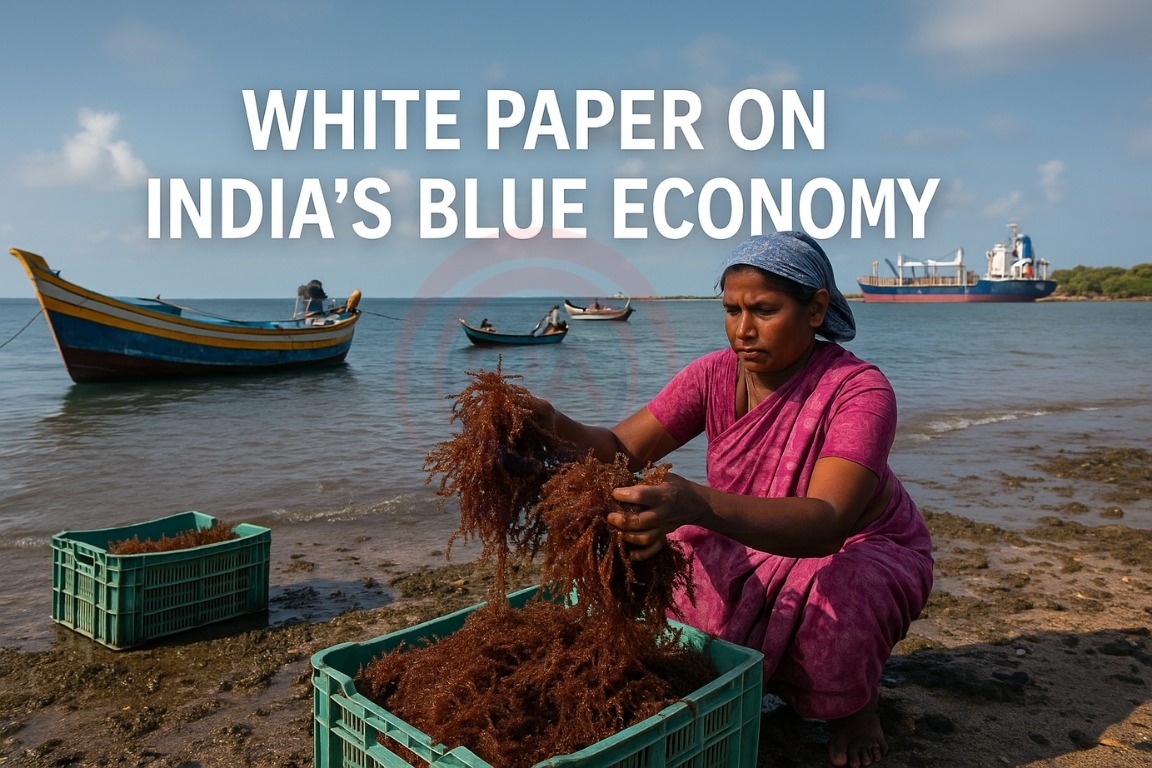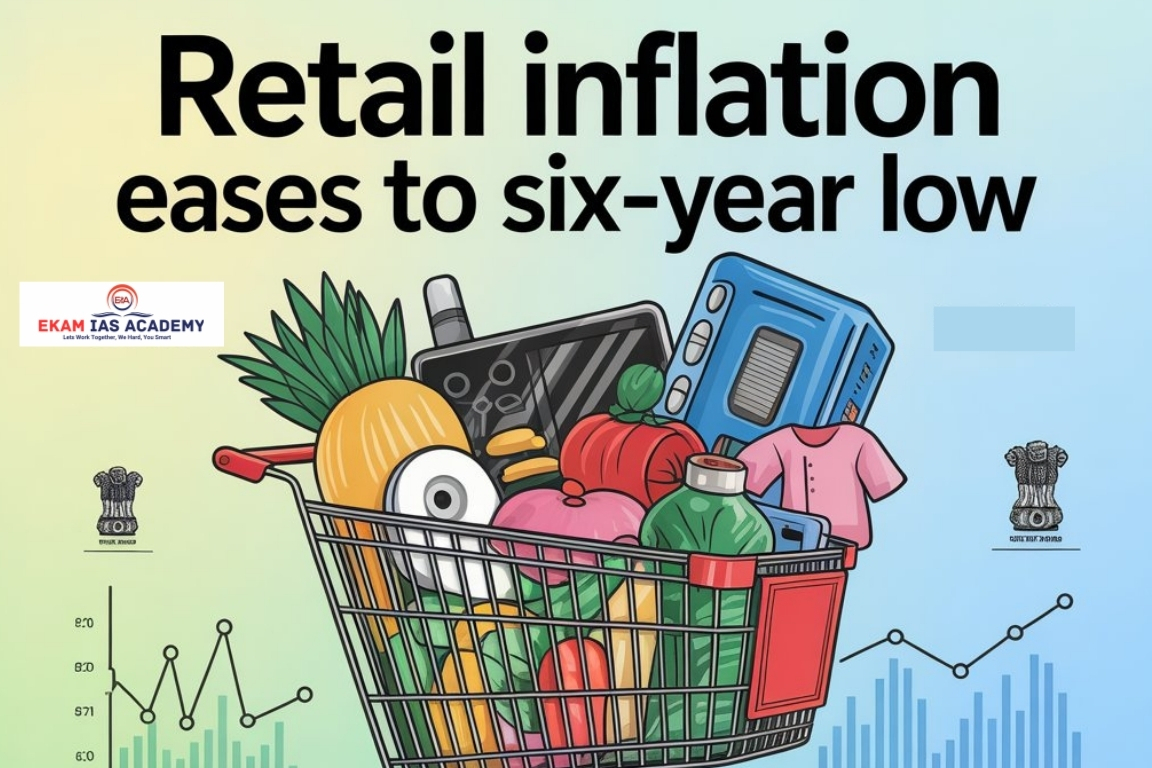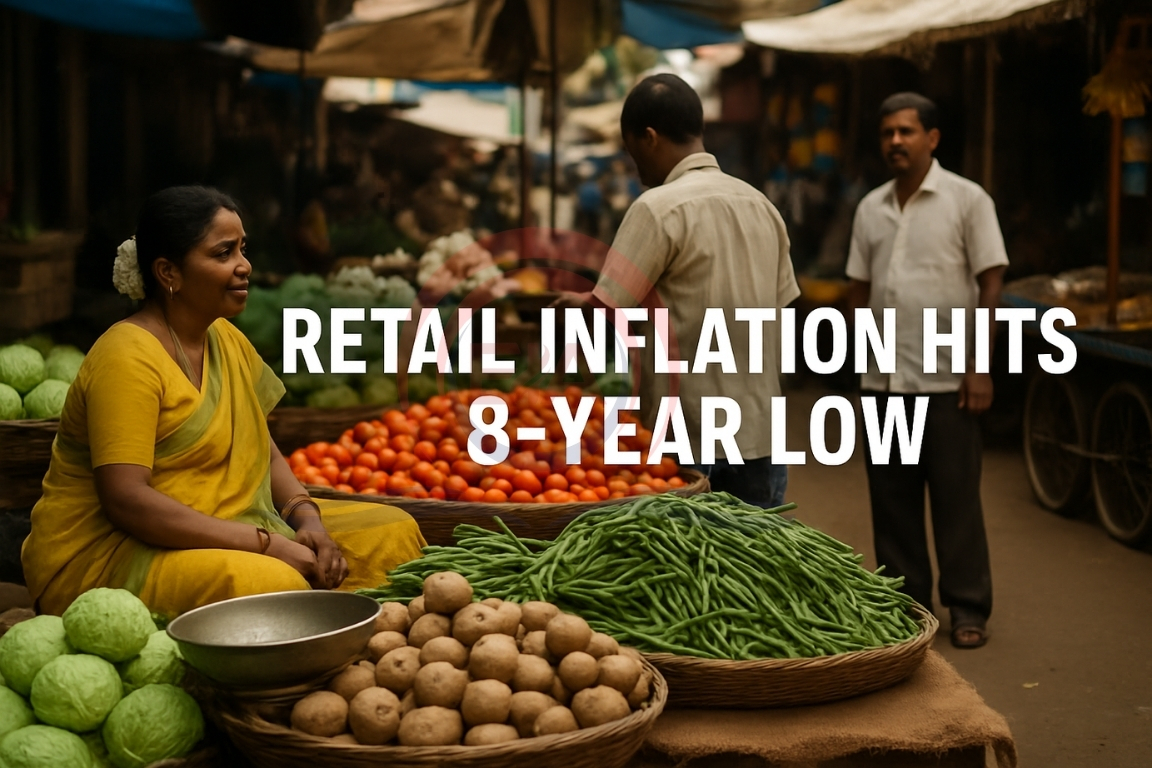The white paper “Transforming India’s Blue Economy” outlines a strategy to harness India’s marine resources for sustainable growth, aiming to make the blue economy a key driver of national development by 2035.
What is the Blue Economy?
- Refers to sustainable use of ocean resources for economic growth, livelihood improvement, and job creation while maintaining healthy marine ecosystems.
- Covers activities such as fisheries, aquaculture, shipping, ports, marine biotechnology, coastal tourism, and renewable ocean energy.
Models of Blue Economy in India Community-led Seaweed Farming (Odisha)
- Engages over 10,000 households in coastal areas. Provides supplementary income and livelihood diversification.
- Absorbs dissolved CO₂, helping in climate change mitigation. Improves local water quality and supports biodiversity.

Smart Port Development (Kochi)
- Adoption of digital twin technology for port operations.
- Improves efficiency, reduces ship waiting time, and optimises resource use.
- Enables real-time environmental monitoring for sustainable port management.
Green Ship Recycling (Alang, Gujarat)
- Upgraded to Hong Kong Convention standards. Ensures safe recovery of steel and metals from ships.
- Promotes safe disposal of hazardous waste and better worker safety.
Major Government Initiatives for Blue Economy
- Deep Ocean Mission (DOM): Exploration of polymetallic nodules and deep-sea bioresources. Development of human submersibles for ocean mapping and sustainable mining.
- Sagarmala Programme: Modernises ports, improves cargo logistics. Develops coastal economic zones to boost trade and industry.
- Blue Economy 2.0: Focus on restoring mangroves and coral reefs. Promotion of sustainable aquaculture and mariculture, especially seaweed farming.
- Pradhan Mantri Matsya Sampada Yojana (PMMSY): Modernises fishing practices and infrastructure. Promotes sustainable fisheries and improves fishers’ income.
Significance
- Enhances coastal livelihoods and economic security.
- Strengthens food security through sustainable fishing.
- Supports climate change mitigation via carbon absorption by marine ecosystems.
- Positions India as a leader in ocean-based economic growth while protecting marine biodiversity.
Conclusion:
India’s Blue Economy vision integrates economic growth with environmental stewardship. By scaling up sustainable models and leveraging technology, India can transform its coasts and oceans into engines of inclusive and resilient development by 2035.





